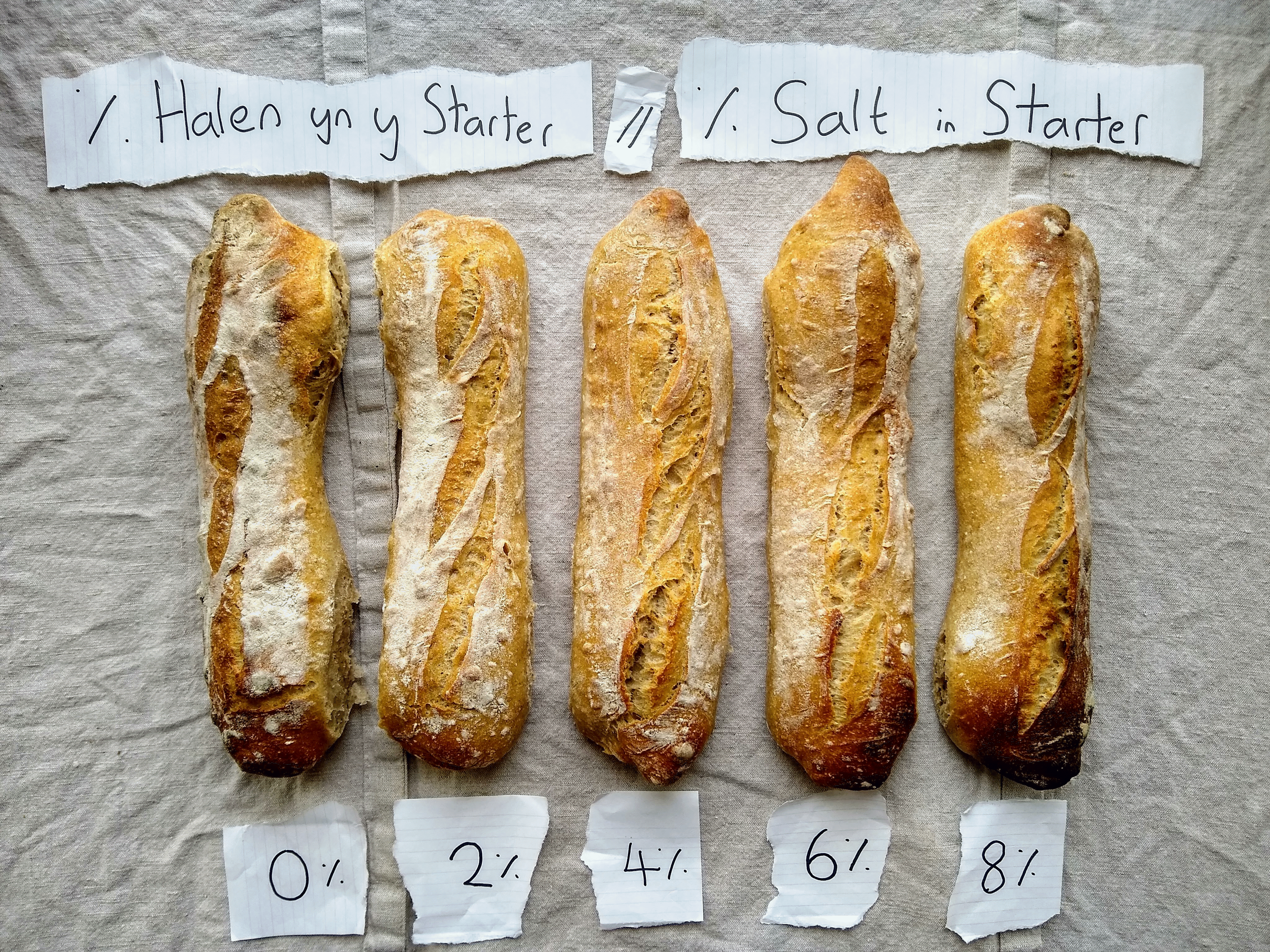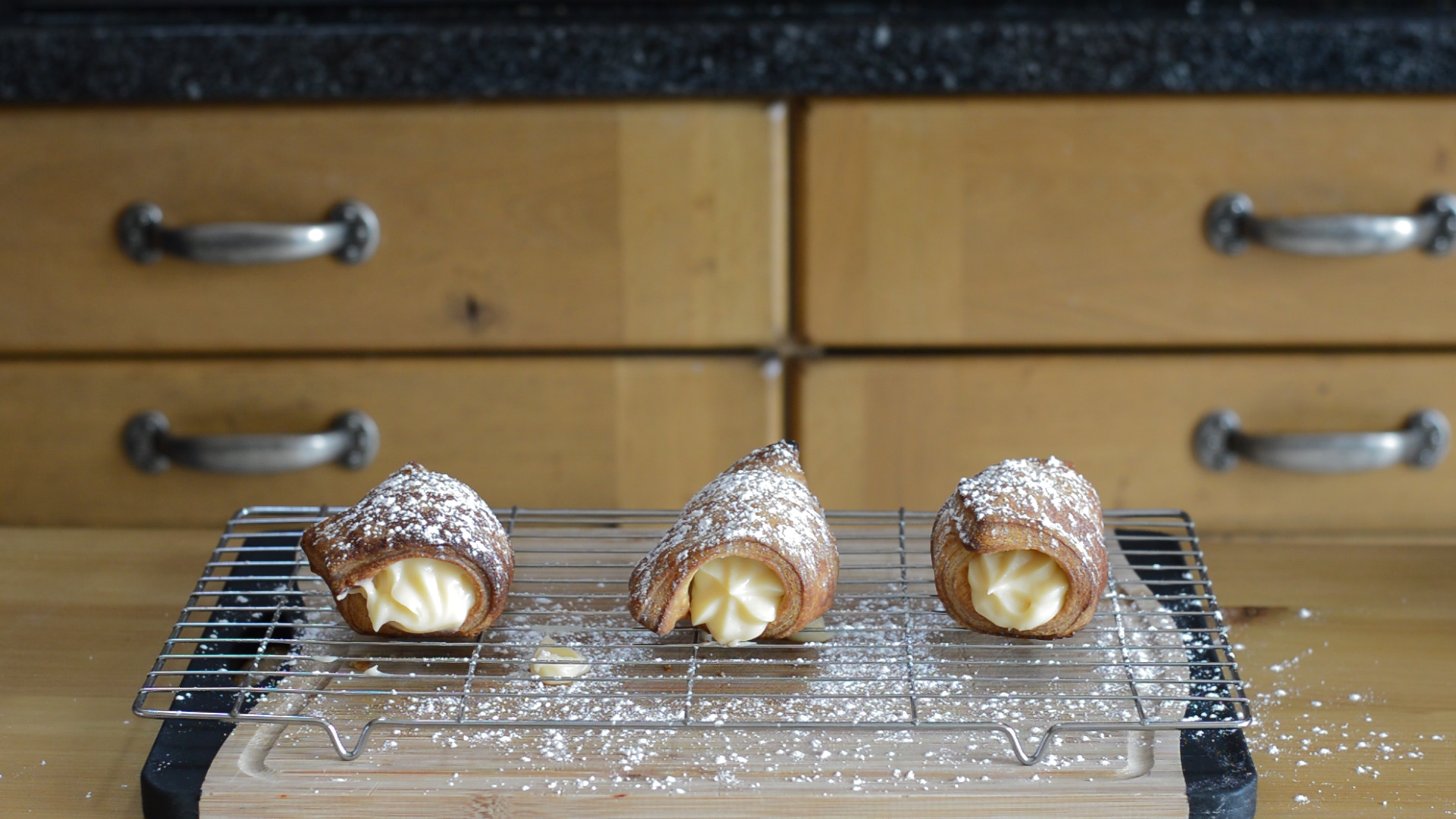The Plan
Down at the restaurant, my dough of choice, is of course, sourdough. Everyday, I’ll take a portion of sourdough starter, and mix that in with my flour and water to make the pizza dough. Simple enough.
Usually, I’ll use around 4% by weight of flour of starter. That is for every 10kg of flour used, I’ll add 400g of starter (4% of 10,000g).
Another thing I’ll obviously be adding to the dough, is salt. Salt gives our dough its flavour and contributes to the overall strength of the gluten network. Salt also has well known antimicrobial properties, able to literally suck the life out of nearby cells through osmosis.
This is what I wanted to investigate.
In the sourdough oats experiment, I did my best to explain the rather intricate ecology of a sourdough starter. Briefly, it’s a symbiotic relationship between native yeast and Lactobacillus bacteria. The Lactobacillus digests complex sugars to produce lactic and acetic acid. This decrease in pH kills off all other microorganisms, all others except native yeast that is.
By enduring the drop in pH, the yeast finds itself in an idyllic environment. With the Lactobacillus happily grazing on maltose, the yeasts are ree to gorge on simpler, less abundant glucose and fructose. Like Remora on Whale Sharks.
Win win!
Not for long. Despite Lactobacillus’ heavyweight nature, its doesn’t play well with salt. Not that yeast does much better with salt, but it hold up better than bacteria. This is where things get interesting. If we salt our starter, there’s a chance we can slow down the growth of bacteria, whilst giving the yeast a head start to multiply on as yet untouched maltose.
My idea was therefore to take a single starter, split it up, and salt each sample, increasing the concentration each time. I would then film the starters over 24 hours or so, to monitor their fermentation progress. Finally, I’ll be taking the starters, incorporating them into a dough and noting any quality changes in the dough and final bake.
Method
I started with a 100% starter (50/50 ratio flour to water) that was last fed 24 hours previously. From this, I would take five 10g samples, placing them each in a separate plastic pot marked with millimeter increments.
To each 10g sample, I’d mix in 50g each of flour (12% protein) and water before then adding the salt. The first sample I left un-salted as a control, before increasing the salt concentration (relative to the weight of flour) to 2%, 4%, 6% and 8% (i.e. I added 50g of flour to each sample so each sample would have 0, 1, 2, 3 and 4g of salt in turn).
The samples were then covered in cling film and left to rise over a 24 hour period. The fermentation was monitored using a GoPro camera taking 10MP images at a rate of 1 image every 60s. Playing the images back at a standard frame rate of 30 fps would give a recording played forward at a rate of 30 minutes per second (or x1800 speed)
Five dough samples were then made following the 24 hour recorded fermentation, from the 5 starter samples.
Methodology, Time lapse and Recipe used
Mix flour, water, salt and starter together to form a mass
The salt content of the dough was adjusted such that the final salt weight (from starter and newly added) was 2% relative to weight of new flour. For example, 50g of 4% salt starter contained 25g of flour and 25 * 0.04 = 1g of salt. We therefore added an additional 4g to the final dough to achieve 5g gymysgedd).
- 200g strong white flour
- 50g wholemeal flour
- 50g starter (with either 0,2,4,6 or 8% salt)
- 5g salt (adjusted according to starter salt concentration)
Rest the dough for about 4 hrs (autolysis) (performed 18:30 until 22:30)
Stretch and fold the dough into smooth balls and bulk ferment in fridge for overnight ( ~ 22:30 – 5:30 )
Remove dough from fridge and let warm to room temp for 1 hour ( 5:30 – 6:30 )
Pre-shape dough into logs to build structure, bench (rest) for 15 mins to relax ( 6:30 – 6:45 )
Shape into baguettes and let prove uncovered on a baking sheet lined with floured baking paper ( 6:45 – 7:15)
Score the baguettes bake on a baking stone. Initially steaming for 10 mins at 200°C before finishing for another 10 mins on 170°C.
Pouring a cup of boiling water into a baking tray on the oven floor was my go to steaming method.
Left the baguettes to cool completely before slicing.
Results
Initial taste impressions
Here are my initial (somewhat unfiltered) thoughts on the baguettes, according to the initial starter salt content.
0% – Too sour, lacking complexity of flavour (no nutty, wheaty notes). Crumb was gummy and chewy. Likely due to starter being overproofed, having peaked around 12-16 hours after feeding. This could have resulted in too much acid/alcohol being produced in the starter, leading to a lack of browning (pH drop reduces Maillard reactions) and a tightening of the dough (more charges in the gluten network).
2% – Same story as 0%, although when removed from the fridge, it hadn’t risen as much as the 0% or 4% starters. Could have been down to it’s placement closer to the back of the fridge though. Either way, the lack of bulking had little impact on it’s flavour, its slightly tighter crumb possessing a flavour almost identical to 0%.
4% – Our winner! The delayed fermentation Goldilocks Zone. Possessing a superior flavour and texture. Nowhere near as tough as the 0% or 2% baguettes, with only a hint of sourness, without the off after-tastes. The crust also had a great flavour. All the nutty, toasted wheat notes were there, despite the crust its self having browned less than the 0% loaf. My theory is that the over proofed starter in the 0-2% loaves had digested most of the natural sugars in the dough. Since the flavour from Maillard reactions come from sugar, 0-2% came out bland relative to the sugar rich 4% loaf
The only bias is that this loaf received the most even bake, right in the middle of the baking tray. This should not have affected its flavour in any way, however. It also was slightly under proofed coming out of the fridge, again due to placement perhaps.
6% – Similar to 4% but with a more open crumb. Either this was due to it sitting in a warmer spot in the fridger, or the yeast activity was somehow higher in it than it’s 4% counterpart. This would then indicate that the sweet spot of flavour and proving power is between 4% and 6, with 4% yeast population having peaked 30 hours in, whilst 6% was still on the rise.
8% – Having risen only half as much as the others and barely moving in the fridge, it still wasn’t a write off. It rose just enough during proofing and baking to produce an acceptable-ish baguette. The crust still had big flavour, lending credence to the leftover-sugar-browning-flavour theory. The only downside was it’s dense crumb, indicating that there is indeed a limit to what the yest can handle. Whether a longer fermentation could have lead to a thriving culture remains to be seen.
Summary
If feeding a starter on a 24 hour schedule, using it to make a proof a dough overnight for 8-12 hours, it’s worth salting your starter. The ideal percentage of salt to flour is 4-6%, given a 100% hydration (equal weight flour and water) starter. Signs also indicate that an active yeast population is sustainable up to and perhaps beyond 8% salinity. Such concentrations of salt would require starter fermentation times beyond 24 hours however. How a dough would react to such long fermentation times, I cannot say.

From time-lapse footage, it seemed that yeast populations became active around 9 hours after feeding, irrespective of salt concentration. This suggests that the Lag Phase for a 10% inoculated starter is around 9 hours. After this point, the exponential growth phase begins, which is significantly influenced by salt concentration. This range in growth rate leads to yeast populations being in a range of stages, from death phase (0-2%), stationary phase (4-6%) to growth phase (8%) after a 24 hour period.




